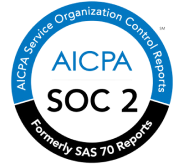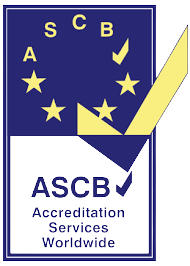Table of Content
- Introduction
- How to Form a Winning Talent Mobility Program?
- Assessing Current Talent and Future Needs
- Fostering a Culture of Internal Opportunities
- Implementing Transparent Communication
- Utilising HR Software for Seamless Mobility
- Identifying and Nurturing High-Potential Employees
- Offering Cross-Functional Experiences
- Supporting Relocation and International Assignments
- The Bottom Line
- FAQs
Introduction
A well-designed talent mobility program boosts employee satisfaction and retention and enhances overall organisational success. However, creating such a program requires careful planning, thoughtful execution, and leveraging the right tools, such as human resource management software or HR software, to streamline processes.
So read about the essentials of forming a successful talent mobility program below Explore the key steps and strategies that will set your organisation on the path to nurturing and retaining top talent. Without further delays, continue to read the post and check if your current HRM software allows you to create and measure internal mobility programs or not.
Want to skip this post?

How to Form a Winning Talent Mobility Program?
Assessing Current Talent and Future Needs
The first step in creating a successful talent mobility program is assessing your talent pool and identifying future skill requirements. Conduct a comprehensive talent audit to understand your employees' strengths, weaknesses, aspirations, and potential for growth. Simultaneously, align this assessment with your organisation's long-term goals to identify areas where talent mobility can add significant value.
For example, you can run skill and talent assessment surveys using uKnowva HRMS. Store the survey templates and edit them as and when the new survey will be rolled out. It saves hours for the talent managers when they are scouting for the best talent to mobilise internally for the next project.
Fostering a Culture of Internal Opportunities
To promote talent mobility, organisations must foster a culture that encourages internal opportunities. Cultivate an environment to explore new roles and opportunities within the company as and when employees get enough power and authority along the way.
Leaders should actively support and participate in this process, setting an example for subordinates.
Implementing Transparent Communication
Transparent communication is the backbone of any successful talent mobility program. Keep your employees informed about upcoming opportunities, job openings, and skill development initiatives.
Use various communication channels, such as company newsletters, town hall meetings, and social intranet by uKnowva, to ensure information reaches every employee.
Utilising HR Software for Seamless Mobility
Incorporating human resource management or HR software significantly streamlines talent mobility. For example, our complete HR software offers performance assessments and succession planning features. Leveraging it ensures that your talent mobility program is efficient, data-driven, and aligned with your organisational objectives.
Identifying and Nurturing High-Potential Employees
Identifying high-potential employees is a crucial aspect of a successful talent mobility program. Utilise performance data, feedback from managers, and assessments to identify individuals who can take on greater responsibilities. Once identified, provide personalised development plans and training opportunities to nurture their skills and prepare them for future roles.
Offering Cross-Functional Experiences
Encouraging cross-functional experiences enriches employees' skill sets and perspectives. Allow employees to take part in temporary assignments or projects in different departments to broaden their knowledge and foster collaboration. This exposure enhances their capabilities and promotes a deeper understanding of the organisation as a whole.
Supporting Relocation and International Assignments
To create an intelligent talent mobility program, consider offering relocation and international assignment opportunities. This allows employees to gain global experience, develop cultural intelligence, and strengthen their adaptability.
Be sure to provide necessary support, such as relocation assistance and cultural training, to ensure a smooth transition for the employees and their families.
You can conduct various training sessions and record the same for future references on eLMS by uKnowva. New hires can go to the eLMS panel and start consuming the training sessions they need to finish their daily deliverables.
Otherwise, they can talk to the chatbot, Ask uKnowva, for further clarifications on training modules. This facility decreases an employee’s major dependency on the HR professional. They get to train themselves on how to manage their data and engagement with the other team members with the help of this bot. The assistance is available with a click.
The Bottom Line
A winning talent mobility program is a key differentiator for organisations that wish to attract, retain, and develop top talent. By understanding the significance of talent mobility, fostering a culture of internal opportunities, and utilising HR software, companies can create a dynamic environment where employees thrive and contribute to long-term organisational success.
Remember that talent mobility is not a one-time effort but an ongoing process of nurturing and empowering your workforce. Regularly assess and improve your internal mobility strategies, leveraging data and feedback to refine your program continually.
FAQs
Q: How do talent mobility programs benefit organisations?
A: Talent mobility programs promote employee engagement, reduce turnover, enhance skill diversity, and create a pipeline of future leaders, benefiting the organisation's overall performance.
Q: What challenges might organisations face while implementing talent mobility programs?
A: Some challenges may include employee resistance to change, lack of transparent communication, and difficulty identifying high-potential employees without proper data insights.
Q: How can organisations measure the success of their talent mobility programs?
A: Organisations can measure success through metrics like internal promotions, employee retention, employee feedback, and performance improvements.
Q: How can an organisation ensure fair employee opportunities in talent mobility programs?
A: Organisations can ensure fairness by promoting transparent communication, providing equal access to opportunities, and establishing clear criteria for talent selection.












